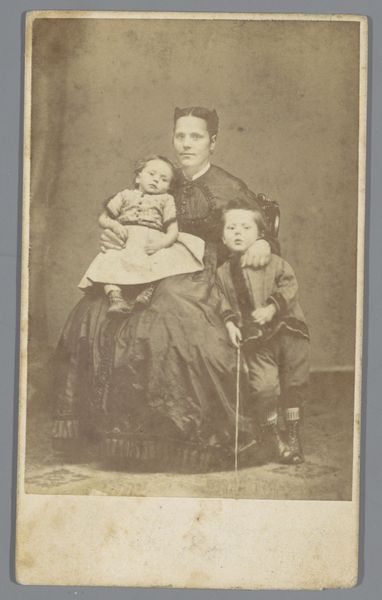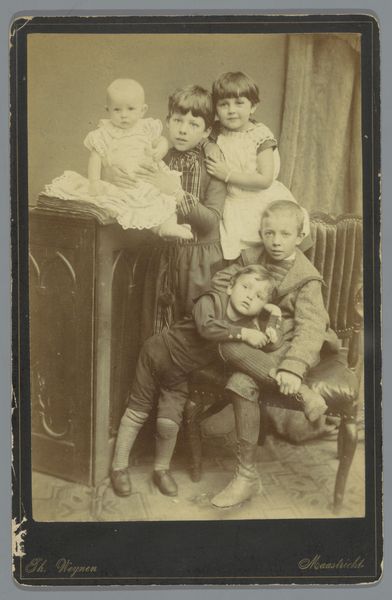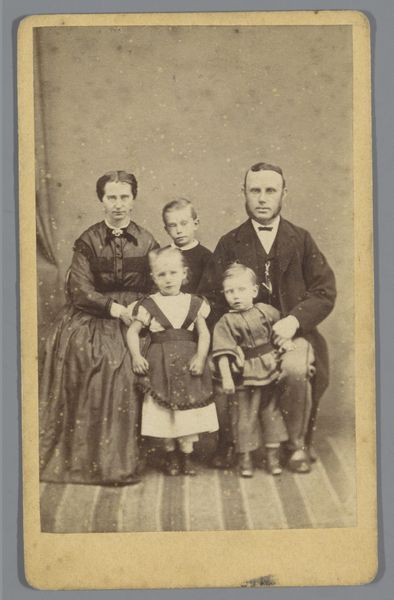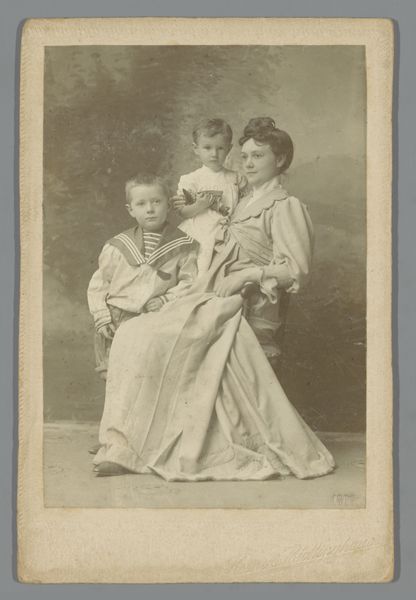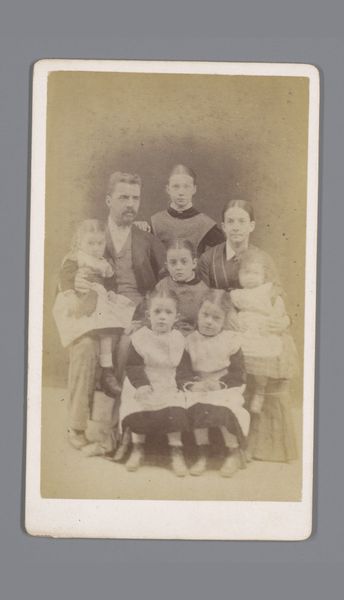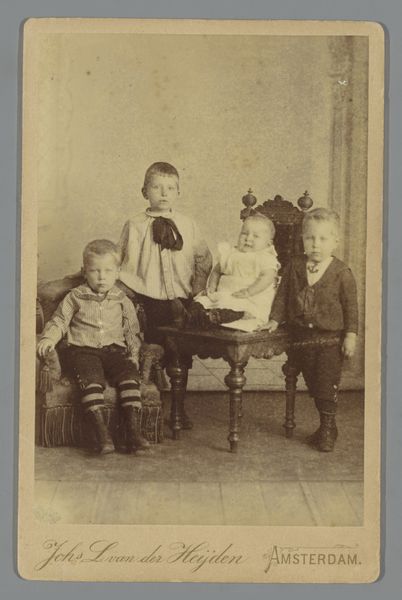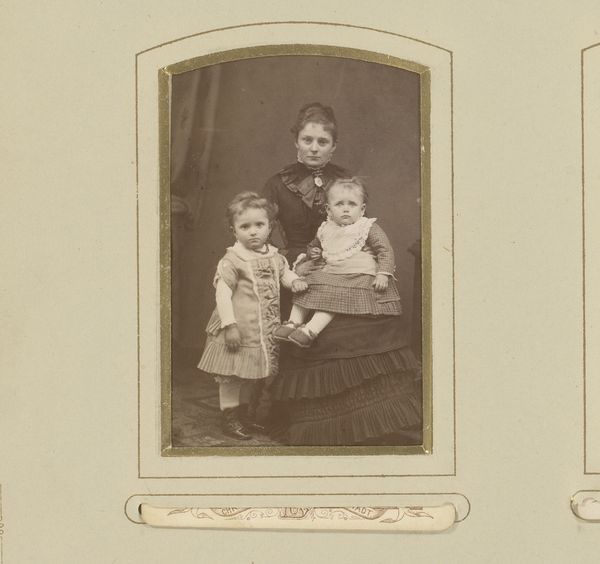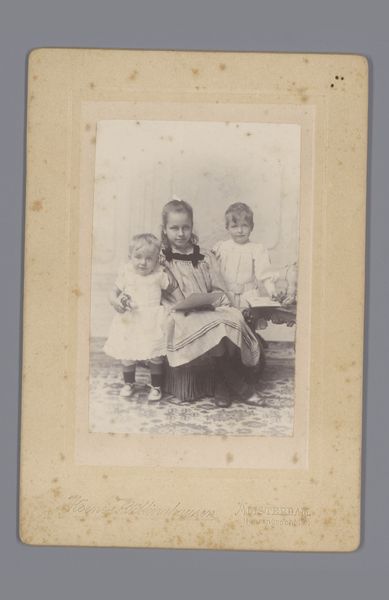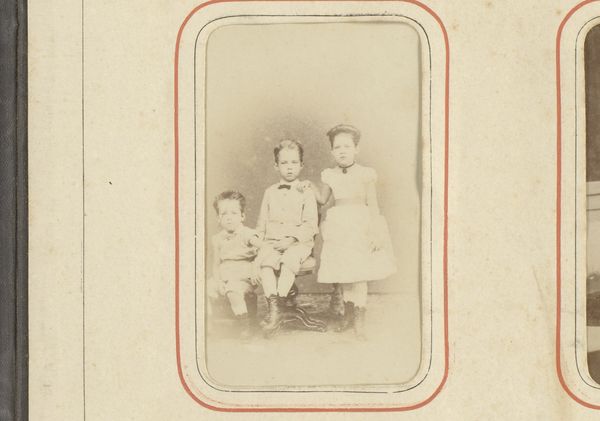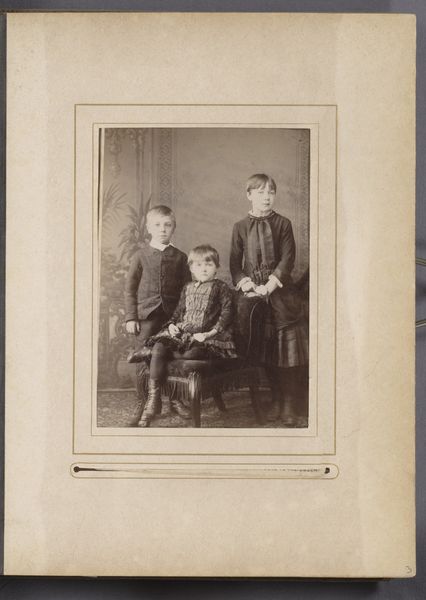
photography, gelatin-silver-print
#
portrait
#
photography
#
group-portraits
#
gelatin-silver-print
#
realism
Dimensions: height 139 mm, width 99 mm
Copyright: Rijks Museum: Open Domain
Curator: Looking at this photograph, taken by Albert Greiner between 1861 and 1890, I'm immediately struck by the children's attire. They seem both formally dressed, yet constrained, even trapped, within their stiff clothing. Editor: There’s a palpable weight in this image, isn't there? A somberness underscored by the subdued palette and the family’s stilted poses. The textures, the fall of light on their garments, seem so tactile yet remote. Curator: Exactly. It invites questions about the role of women and children during this time. Were women able to determine their representation? The mother here, with three children, stares directly at the camera, challenging a culture dominated by men. The clothing of that time and social and family values created limitations. Editor: It also speaks to the technical means of photographic portraiture, specifically this gelatin silver print. Look at how the artist employs light to emphasize the contours of the faces and the rich detailing on the mother's dress, her neck bow. The careful staging implies labor. There is clearly a material cost and investment being captured for both mother and children. Curator: Absolutely, there’s labor on both sides of the camera lens. These photographic studios arose at a specific juncture in European culture. Family portraits are a form of status signaling—to have your family portrayed and printed meant wealth. In modern contexts we could compare these photos to Instagram posts, showcasing particular lived experience, or perceived lived experience. Editor: Right, it forces us to consider the accessibility and class implications of this type of representation. Greiner's studio being based in Amsterdam adds another layer. How does being a European photographic firm influence the family that gets their photo done? How do international trade networks shape how portrait studios operated? Curator: So while it is hard to definitively uncover what kind of gender relations this specific family portrait suggests, we have the means of interpreting and extrapolating potential ideas that provide us insights on Victorian-era maternal limitations. The portrait also creates ideas about generational familial relationships, providing hints to the lives and economic well-being during that era. Editor: A poignant look back, isn’t it? Revealing that every photographic material tells a story of labor, commerce and identity construction within shifting historical contexts.
Comments
No comments
Be the first to comment and join the conversation on the ultimate creative platform.
